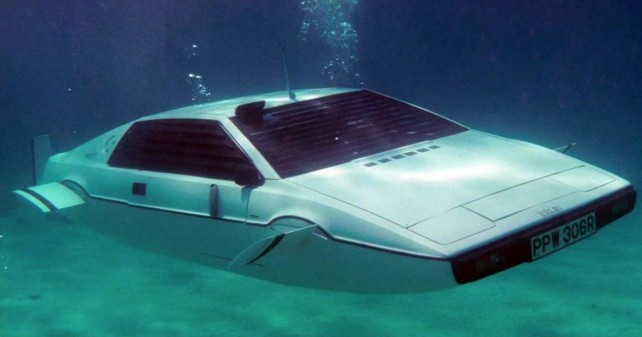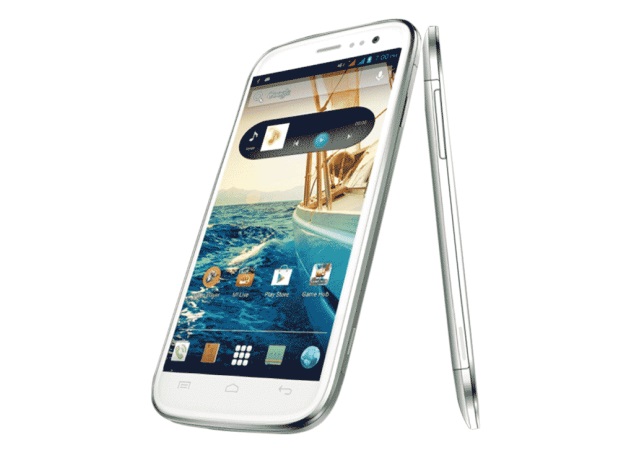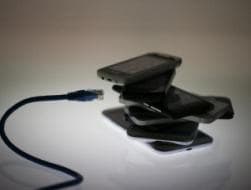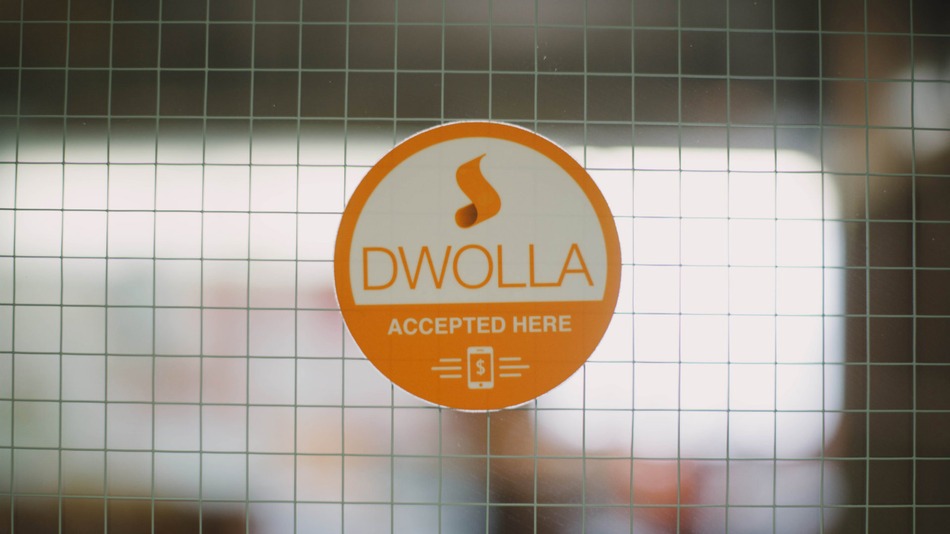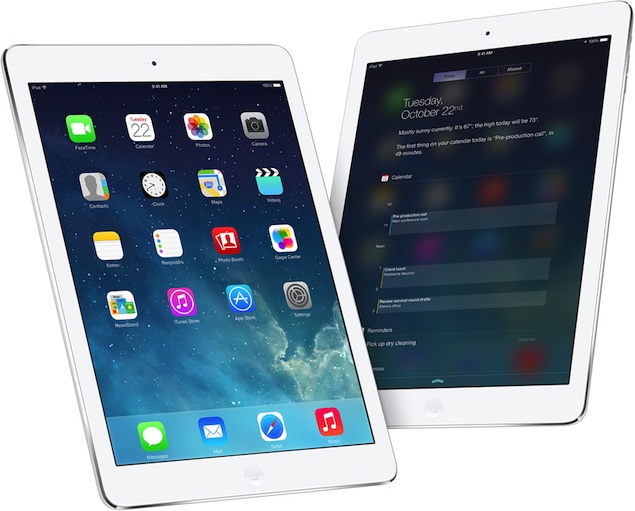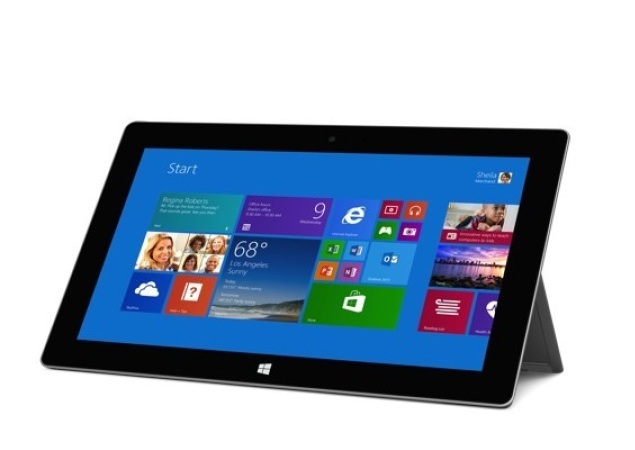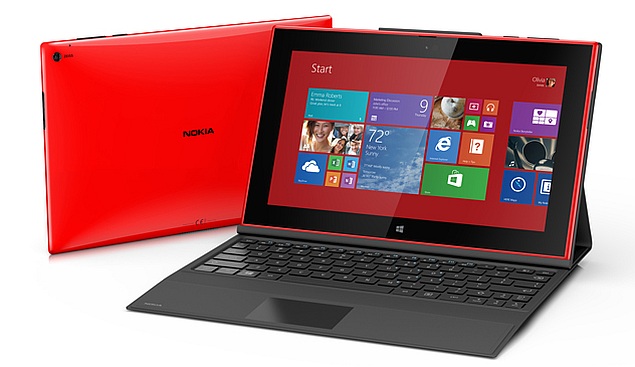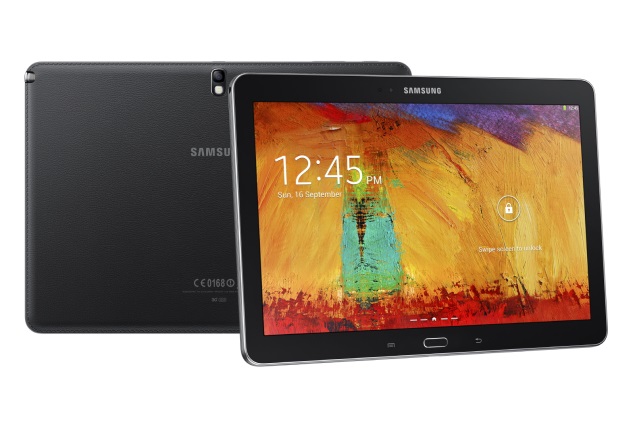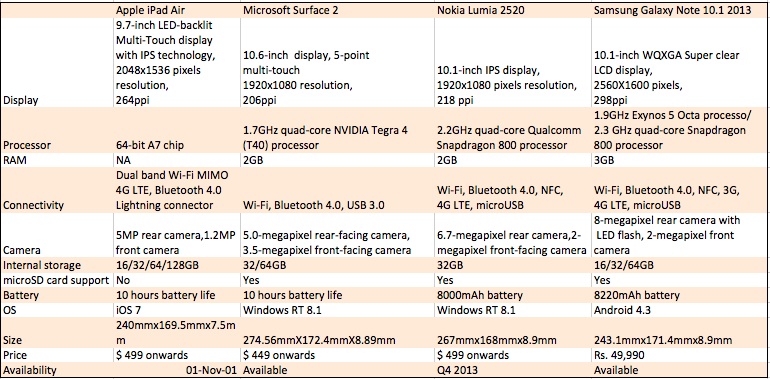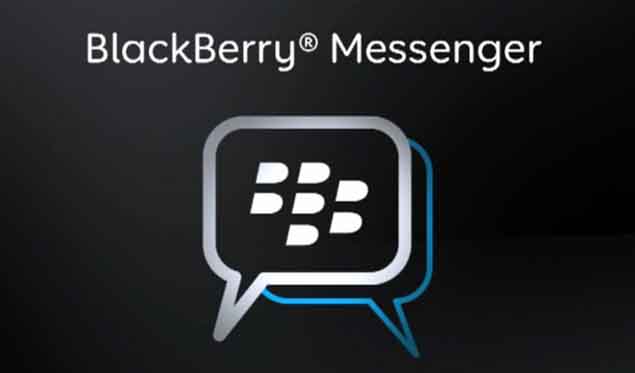Asus Transformer Pad TF701T review
Asus has added a 2560 x 1600 display and Tegra 4 grunt to its flagship slate – but is this keyboard-equipped tablet a racing stallion or a plodding workhorse?
Asus has carved out quite the niche for itself with its Transformer range of tablets, which offered users raw power, an honest-to-goodness physical keyboard, a massively extended battery life and, mercifully, a full-fat USB port.
The Transformer Prime was the first device that challenged the notion that tablets were consumption-only devices, and Asus’s Transformer Pad Infinity which built upon the Prime’s foundations took Asus’ hybrid vision further.
Can the all-new Transformer Pad TF701T (we’ll drop the random letters and numbers now, don’t worry) offer enough to tempt both existing Transformer users and newcomers alike? Let’s find out…
Asus has carved out quite the niche for itself with its Transformer range of tablets, which offered users raw power, an honest-to-goodness physical keyboard, a massively extended battery life and, mercifully, a full-fat USB port.
The Transformer Prime was the first device that challenged the notion that tablets were consumption-only devices, and Asus’s Transformer Pad Infinity which built upon the Prime’s foundations took Asus’ hybrid vision further.
Can the all-new Transformer Pad TF701T (we’ll drop the random letters and numbers now, don’t worry) offer enough to tempt both existing Transformer users and newcomers alike? Let’s find out…
DESIGN AND BUILD: SUDDENLY, PLASTIC EVERYWHERE
 In design terms, at least, the TF701 is evolutionary, rather than revolutionary – it sports the same premium-feeling, solid build with an aluminium spun-circle finish round the back, along with a plastic strip for better Wi-Fi and GPS connectivity. Unlike the Transformer Pad Infinity, the plastic actually looks like it's a conscious design decision, rather than a hastily cobbled-together fix for the Transformer Prime's issues.
In design terms, at least, the TF701 is evolutionary, rather than revolutionary – it sports the same premium-feeling, solid build with an aluminium spun-circle finish round the back, along with a plastic strip for better Wi-Fi and GPS connectivity. Unlike the Transformer Pad Infinity, the plastic actually looks like it's a conscious design decision, rather than a hastily cobbled-together fix for the Transformer Prime's issues.
 Round the front, its 10.1 display is surrounded by a rather chunky bezel – especially when compared to the iPad Air's slender effort – and that makes the Transformer Pad look a little dated.
Once again, Asus has shuffled the arrangement of the physical controls. The volume controls now sit on the back top-left and it's a more natural-feeling position for them.
The array of micro-HDMI, microSD and 3.5mm headphone ports sit on the left hand side of the tablet - in the same location as on the Infinity, though the microphone has moved to the top left of the tablet. That's probably a good thing too as you're less likely to cover it up with your palm and muffle your words.
Irritatingly, Asus has changed the proprietary charging port on the Transformer Pad – meaning you won’t be able to use the same cable if you’re an existing Transformer Infinity owner.
Round the front, its 10.1 display is surrounded by a rather chunky bezel – especially when compared to the iPad Air's slender effort – and that makes the Transformer Pad look a little dated.
Once again, Asus has shuffled the arrangement of the physical controls. The volume controls now sit on the back top-left and it's a more natural-feeling position for them.
The array of micro-HDMI, microSD and 3.5mm headphone ports sit on the left hand side of the tablet - in the same location as on the Infinity, though the microphone has moved to the top left of the tablet. That's probably a good thing too as you're less likely to cover it up with your palm and muffle your words.
Irritatingly, Asus has changed the proprietary charging port on the Transformer Pad – meaning you won’t be able to use the same cable if you’re an existing Transformer Infinity owner.
In design terms, at least, the TF701 is evolutionary, rather than revolutionary – it sports the same premium-feeling, solid build with an aluminium spun-circle finish round the back, along with a plastic strip for better Wi-Fi and GPS connectivity. Unlike the Transformer Pad Infinity, the plastic actually looks like it's a conscious design decision, rather than a hastily cobbled-together fix for the Transformer Prime's issues.
Round the front, its 10.1 display is surrounded by a rather chunky bezel – especially when compared to the iPad Air's slender effort – and that makes the Transformer Pad look a little dated.
Once again, Asus has shuffled the arrangement of the physical controls. The volume controls now sit on the back top-left and it's a more natural-feeling position for them.
The array of micro-HDMI, microSD and 3.5mm headphone ports sit on the left hand side of the tablet - in the same location as on the Infinity, though the microphone has moved to the top left of the tablet. That's probably a good thing too as you're less likely to cover it up with your palm and muffle your words.
Irritatingly, Asus has changed the proprietary charging port on the Transformer Pad – meaning you won’t be able to use the same cable if you’re an existing Transformer Infinity owner.
DISPLAY: BIG, BRIGHT AND BOLD
 The Transformer Pad sports a whopping 10.1in, 2560 x 1600 display, yielding up 299 ppi – that’s a higher pixel count and on a bigger screen size than the new iPad Air's 2048 x 1536 Retina display. Clever stuff.
It’s impressive given that it packs the same amount of pixels as a high-end 30in montitor into a far smaller space – and next to the Transformer Pad Infinity, the Pad’s display veritably massages your peepers with scented oils.
Text appears much sharper, while colour reproduction is close to that of the Infinity. As with the Prime and the Infinity, the display also has a super-bright mode for outdoor use, which is very handy for rendering text readable in direct sunlight.
What you choose to view on the Transformer Pad's super hi-res screen is up to you. Low-res, non-optimised apps won't exactly benefit but Full HD movies and hi-res images will look beautiful as will e-books, though be warned the 16:9 screen is a bit awkward in portrait.
The Transformer Pad sports a whopping 10.1in, 2560 x 1600 display, yielding up 299 ppi – that’s a higher pixel count and on a bigger screen size than the new iPad Air's 2048 x 1536 Retina display. Clever stuff.
It’s impressive given that it packs the same amount of pixels as a high-end 30in montitor into a far smaller space – and next to the Transformer Pad Infinity, the Pad’s display veritably massages your peepers with scented oils.
Text appears much sharper, while colour reproduction is close to that of the Infinity. As with the Prime and the Infinity, the display also has a super-bright mode for outdoor use, which is very handy for rendering text readable in direct sunlight.
What you choose to view on the Transformer Pad's super hi-res screen is up to you. Low-res, non-optimised apps won't exactly benefit but Full HD movies and hi-res images will look beautiful as will e-books, though be warned the 16:9 screen is a bit awkward in portrait.
The Transformer Pad sports a whopping 10.1in, 2560 x 1600 display, yielding up 299 ppi – that’s a higher pixel count and on a bigger screen size than the new iPad Air's 2048 x 1536 Retina display. Clever stuff.
It’s impressive given that it packs the same amount of pixels as a high-end 30in montitor into a far smaller space – and next to the Transformer Pad Infinity, the Pad’s display veritably massages your peepers with scented oils.
Text appears much sharper, while colour reproduction is close to that of the Infinity. As with the Prime and the Infinity, the display also has a super-bright mode for outdoor use, which is very handy for rendering text readable in direct sunlight.
What you choose to view on the Transformer Pad's super hi-res screen is up to you. Low-res, non-optimised apps won't exactly benefit but Full HD movies and hi-res images will look beautiful as will e-books, though be warned the 16:9 screen is a bit awkward in portrait.
POWER: TEGRA 4 KEEPS THINGS TICKING ALONG
The Transformer Pad has received a substantial, not to mention very welcome spec boost over its predecessors.
It crams in a quad-core Tegra 4 processor along with 2GB RAM, and although that's less than the 3GB found in the Galaxy Note 10.1, Nvidia's silicon keeps Android whizzing along with ease.
This performance boost is a huge relief. The Transformer Prime and Infinity’s Tegra 3 processor always stumbled when dealing with processor-intensive tasks or even relatively simple ones like opening web pages.
The Transformer Pad, by contrast, is a breeze to use, zipping through web pages, graphically-intensive games like Real Racing 3 and word processor apps without a hitch. This is the way it was meant to be and we’re glad that the Transformer series finally has the power it deserves.
The Transformer Pad has received a substantial, not to mention very welcome spec boost over its predecessors.
It crams in a quad-core Tegra 4 processor along with 2GB RAM, and although that's less than the 3GB found in the Galaxy Note 10.1, Nvidia's silicon keeps Android whizzing along with ease.
This performance boost is a huge relief. The Transformer Prime and Infinity’s Tegra 3 processor always stumbled when dealing with processor-intensive tasks or even relatively simple ones like opening web pages.
The Transformer Pad, by contrast, is a breeze to use, zipping through web pages, graphically-intensive games like Real Racing 3 and word processor apps without a hitch. This is the way it was meant to be and we’re glad that the Transformer series finally has the power it deserves.
KEYBOARD DOCK: PREPARE FOR DOCKING
 The standout feature of the Transformer line is, of course, its keyboard dock, which comes complete with full-size SD card and USB 3.0 slots as well as a multi-touch trackpad. This time around it's been rendered in plastic – a cost-saving measure, which keeps the price of the tablet down to £430 (the Infinity launched at £600 for the 64GB model). The fact that it isn't available to pick up without the dock suggests that an affordable all-in price was clearly a priority for Asus.
The standout feature of the Transformer line is, of course, its keyboard dock, which comes complete with full-size SD card and USB 3.0 slots as well as a multi-touch trackpad. This time around it's been rendered in plastic – a cost-saving measure, which keeps the price of the tablet down to £430 (the Infinity launched at £600 for the 64GB model). The fact that it isn't available to pick up without the dock suggests that an affordable all-in price was clearly a priority for Asus.
 In some ways the plastic build is a shame – it means that the Transformer Pad is substantially bulkier than the Infinity, and the combination of the tablet’s metal body and plastic strip, and the plastic dock, make it feel slightly bitty. But the dock's finish matches up pretty well with the metal used on the tablet, and it's certainly more durable than the notoriously scratchable aluminium finish.
Not only that, but we found that the plastic offered extra grip on our palms which slipped around less when typing over long periods of time compared to the old metal keyboard dock. And you can pretend you’re a DJ – running your nails along the bottom of the Pad’s plastic texture keyboard dock makes a pretty convincing vinyl scratching sound. Ahem.
The hinge has a bit more give in it than that of the Infinity and feels a little too loose for our liking, though this might have been a conscious decision to make it easier to open. Still, it's not what we expect to see in a premium device and a stiffer hinge would be nice.
However, the docked tablet is less top-heavy than the previous Transformer and it doesn’t feel like it’s going to tip over at the slightest provocation. Typing on a busy train carriage with the Transformer Pad on our laps was a more comfortable experience but one that needed the odd bit of hand support. As much fun as a game of 'will the expensive shiny thing tip over at the next stop?' sounds, we’d rather avoid our £430 tablet smashing into a commuter-trodden floor.
We also found that we typed faster on the Tab than on the Infinity; there's less friction when moving your ball of your hand across the plastic dock than the metal one. Plus – and it's a small detail, this – the plastic is less chilly under the palms than the metal. Whether you prefer the plastic or the metal dock is going to come down to personal preference, but it’s certainly not a step down in build quality – just a different material.
In some ways the plastic build is a shame – it means that the Transformer Pad is substantially bulkier than the Infinity, and the combination of the tablet’s metal body and plastic strip, and the plastic dock, make it feel slightly bitty. But the dock's finish matches up pretty well with the metal used on the tablet, and it's certainly more durable than the notoriously scratchable aluminium finish.
Not only that, but we found that the plastic offered extra grip on our palms which slipped around less when typing over long periods of time compared to the old metal keyboard dock. And you can pretend you’re a DJ – running your nails along the bottom of the Pad’s plastic texture keyboard dock makes a pretty convincing vinyl scratching sound. Ahem.
The hinge has a bit more give in it than that of the Infinity and feels a little too loose for our liking, though this might have been a conscious decision to make it easier to open. Still, it's not what we expect to see in a premium device and a stiffer hinge would be nice.
However, the docked tablet is less top-heavy than the previous Transformer and it doesn’t feel like it’s going to tip over at the slightest provocation. Typing on a busy train carriage with the Transformer Pad on our laps was a more comfortable experience but one that needed the odd bit of hand support. As much fun as a game of 'will the expensive shiny thing tip over at the next stop?' sounds, we’d rather avoid our £430 tablet smashing into a commuter-trodden floor.
We also found that we typed faster on the Tab than on the Infinity; there's less friction when moving your ball of your hand across the plastic dock than the metal one. Plus – and it's a small detail, this – the plastic is less chilly under the palms than the metal. Whether you prefer the plastic or the metal dock is going to come down to personal preference, but it’s certainly not a step down in build quality – just a different material.
The standout feature of the Transformer line is, of course, its keyboard dock, which comes complete with full-size SD card and USB 3.0 slots as well as a multi-touch trackpad. This time around it's been rendered in plastic – a cost-saving measure, which keeps the price of the tablet down to £430 (the Infinity launched at £600 for the 64GB model). The fact that it isn't available to pick up without the dock suggests that an affordable all-in price was clearly a priority for Asus.
In some ways the plastic build is a shame – it means that the Transformer Pad is substantially bulkier than the Infinity, and the combination of the tablet’s metal body and plastic strip, and the plastic dock, make it feel slightly bitty. But the dock's finish matches up pretty well with the metal used on the tablet, and it's certainly more durable than the notoriously scratchable aluminium finish.
Not only that, but we found that the plastic offered extra grip on our palms which slipped around less when typing over long periods of time compared to the old metal keyboard dock. And you can pretend you’re a DJ – running your nails along the bottom of the Pad’s plastic texture keyboard dock makes a pretty convincing vinyl scratching sound. Ahem.
The hinge has a bit more give in it than that of the Infinity and feels a little too loose for our liking, though this might have been a conscious decision to make it easier to open. Still, it's not what we expect to see in a premium device and a stiffer hinge would be nice.
However, the docked tablet is less top-heavy than the previous Transformer and it doesn’t feel like it’s going to tip over at the slightest provocation. Typing on a busy train carriage with the Transformer Pad on our laps was a more comfortable experience but one that needed the odd bit of hand support. As much fun as a game of 'will the expensive shiny thing tip over at the next stop?' sounds, we’d rather avoid our £430 tablet smashing into a commuter-trodden floor.
We also found that we typed faster on the Tab than on the Infinity; there's less friction when moving your ball of your hand across the plastic dock than the metal one. Plus – and it's a small detail, this – the plastic is less chilly under the palms than the metal. Whether you prefer the plastic or the metal dock is going to come down to personal preference, but it’s certainly not a step down in build quality – just a different material.
CAMERA: FUNCTIONAL IS THE WORD
 Asus’ tablets have never been known for their cameras, and the Pad is no exception. Its 5MP camera is functional rather than impressive while round the front there’s a 1.2MP camera for 720p Skype chats.
We try not to condone using tablets to snap photos, but if you absolutely must, then the Transformer Pad produces useable (if not excellent) shots in decent lighting.
Lose the light, though, and you’re in a whole world of trouble, thanks to its lack of flash. Then again, if you’re trying to take photos of a night out with a tablet then you’ve got bigger problems.
There’s the usual fare of effects and filters present and a GIF mode which converts 30 shots taken in succession into a gif, which you can then reverse. Unlike devices like that Galaxy Note 3 which also have this feature, you can’t manually select which parts of a scene you want to move/freeze.
Asus’ tablets have never been known for their cameras, and the Pad is no exception. Its 5MP camera is functional rather than impressive while round the front there’s a 1.2MP camera for 720p Skype chats.
We try not to condone using tablets to snap photos, but if you absolutely must, then the Transformer Pad produces useable (if not excellent) shots in decent lighting.
Lose the light, though, and you’re in a whole world of trouble, thanks to its lack of flash. Then again, if you’re trying to take photos of a night out with a tablet then you’ve got bigger problems.
There’s the usual fare of effects and filters present and a GIF mode which converts 30 shots taken in succession into a gif, which you can then reverse. Unlike devices like that Galaxy Note 3 which also have this feature, you can’t manually select which parts of a scene you want to move/freeze.
Asus’ tablets have never been known for their cameras, and the Pad is no exception. Its 5MP camera is functional rather than impressive while round the front there’s a 1.2MP camera for 720p Skype chats.
We try not to condone using tablets to snap photos, but if you absolutely must, then the Transformer Pad produces useable (if not excellent) shots in decent lighting.
Lose the light, though, and you’re in a whole world of trouble, thanks to its lack of flash. Then again, if you’re trying to take photos of a night out with a tablet then you’ve got bigger problems.
There’s the usual fare of effects and filters present and a GIF mode which converts 30 shots taken in succession into a gif, which you can then reverse. Unlike devices like that Galaxy Note 3 which also have this feature, you can’t manually select which parts of a scene you want to move/freeze.
OS: ANDROID 4.2.2
 Running Android 4.2.2 Jelly Bean, Asus has used a light touch when skinning Android, with a button in the bottom left pinging up a bar with a selection of floating widgets that you can strew across your homescreen. It's a bit of an odd placement; you’re surely more likely to use the back, home and multi-tasking buttons, which have been relegated to a slightly more awkward central position.
It’s worth noting that 10in Android tablets have always been a little underserved by apps – Android’s tablet app ecosystem has never held a candle to that of the iPad, and the runaway success of 7in Android devices has meant that many app developers have prioritised the smaller slates over their big brothers.
Apps like BBC iPlayer have only just been optimised for 10in tablets, while Sky Go still insists – bizarrely – that you watch videos in portrait mode. Then again, there’s a reasonable selection of key apps like Netflix and Kindle, and if you don’t mind the odd stretched-out Android phone app, you’re golden.
Running Android 4.2.2 Jelly Bean, Asus has used a light touch when skinning Android, with a button in the bottom left pinging up a bar with a selection of floating widgets that you can strew across your homescreen. It's a bit of an odd placement; you’re surely more likely to use the back, home and multi-tasking buttons, which have been relegated to a slightly more awkward central position.
It’s worth noting that 10in Android tablets have always been a little underserved by apps – Android’s tablet app ecosystem has never held a candle to that of the iPad, and the runaway success of 7in Android devices has meant that many app developers have prioritised the smaller slates over their big brothers.
Apps like BBC iPlayer have only just been optimised for 10in tablets, while Sky Go still insists – bizarrely – that you watch videos in portrait mode. Then again, there’s a reasonable selection of key apps like Netflix and Kindle, and if you don’t mind the odd stretched-out Android phone app, you’re golden.
Running Android 4.2.2 Jelly Bean, Asus has used a light touch when skinning Android, with a button in the bottom left pinging up a bar with a selection of floating widgets that you can strew across your homescreen. It's a bit of an odd placement; you’re surely more likely to use the back, home and multi-tasking buttons, which have been relegated to a slightly more awkward central position.
It’s worth noting that 10in Android tablets have always been a little underserved by apps – Android’s tablet app ecosystem has never held a candle to that of the iPad, and the runaway success of 7in Android devices has meant that many app developers have prioritised the smaller slates over their big brothers.
Apps like BBC iPlayer have only just been optimised for 10in tablets, while Sky Go still insists – bizarrely – that you watch videos in portrait mode. Then again, there’s a reasonable selection of key apps like Netflix and Kindle, and if you don’t mind the odd stretched-out Android phone app, you’re golden.
BATTERY LIFE: YOU GOT THE TOUCH! YOU GOT THE POWER!
The Transformer Pad packs in a 7,820 mAh battery while the dock tacks on another 4,170mAh’s worth of power which, by Asus' reckoning is 17 hours all-in. The upshot of all this is that the Transformer Pad will run out of juice long after you’ve nodded off on the couch after a hard day’s slog at the office.
Stay tuned for our full video rundown test to see what the beastly combination of the internal and dock battery can really offer in terms of battery life, but for the moment, we have no qualms in high-fiving Asus for giving us a tablet with such stellar longevity.
The Transformer Pad packs in a 7,820 mAh battery while the dock tacks on another 4,170mAh’s worth of power which, by Asus' reckoning is 17 hours all-in. The upshot of all this is that the Transformer Pad will run out of juice long after you’ve nodded off on the couch after a hard day’s slog at the office.
Stay tuned for our full video rundown test to see what the beastly combination of the internal and dock battery can really offer in terms of battery life, but for the moment, we have no qualms in high-fiving Asus for giving us a tablet with such stellar longevity.
VERDICT: TABBOOK POTENTIAL REALISED
Previous generations of Asus Transformer tablets felt like beta versions of a brilliant concept – the Prime’s connectivity issues and the Infinity’s slightly underpowered Tegra 3 processor left them struggling to realise the potential of the tabbook form factor.
With the Tab’s ferociously powerful Tegra 4 chipset, it finally seems like that potential has been realised – this is a device that you can work, play and browse content on without feeling like it’s going to hang at any moment.
In terms of raw specs, the Tab is bested by Samsung’s 2014 Galaxy Tab 10.1, but of course, Asus has a very specific customer in mind: people who want to use a tablet with the option of an integrated physical keyboard dock.
Apple’s Tim Cook may rail against competitors “trying to make PCs into tablets and tablets into PCs,” but it’s clear that there’s a place in the tablet ecosystem for devices with physical keyboards. If you want a device for work as well as media consumption, the Transformer Pad can’t be beat; with USB 3.0, an array of productivity apps, full Word compatibility, a physical keyboard and a proper file and folder system, it’s a genuine laptop replacement. And its ridiculous battery life means you don’t have to worry about taking it on long trips, either.
Once you’re done with work, it’s plenty powerful enough, and just about portable enough, to go toe-to-toe with the top tier of Android tabs as a gaming and media device, too.
If you can get past its large bezels and slightly hefty weight and are looking for a tablet for work as much as play, then you can’t go wrong with Asus’ best hybrid yet.
Previous generations of Asus Transformer tablets felt like beta versions of a brilliant concept – the Prime’s connectivity issues and the Infinity’s slightly underpowered Tegra 3 processor left them struggling to realise the potential of the tabbook form factor.
With the Tab’s ferociously powerful Tegra 4 chipset, it finally seems like that potential has been realised – this is a device that you can work, play and browse content on without feeling like it’s going to hang at any moment.
In terms of raw specs, the Tab is bested by Samsung’s 2014 Galaxy Tab 10.1, but of course, Asus has a very specific customer in mind: people who want to use a tablet with the option of an integrated physical keyboard dock.
Apple’s Tim Cook may rail against competitors “trying to make PCs into tablets and tablets into PCs,” but it’s clear that there’s a place in the tablet ecosystem for devices with physical keyboards. If you want a device for work as well as media consumption, the Transformer Pad can’t be beat; with USB 3.0, an array of productivity apps, full Word compatibility, a physical keyboard and a proper file and folder system, it’s a genuine laptop replacement. And its ridiculous battery life means you don’t have to worry about taking it on long trips, either.
Once you’re done with work, it’s plenty powerful enough, and just about portable enough, to go toe-to-toe with the top tier of Android tabs as a gaming and media device, too.
If you can get past its large bezels and slightly hefty weight and are looking for a tablet for work as much as play, then you can’t go wrong with Asus’ best hybrid yet.
